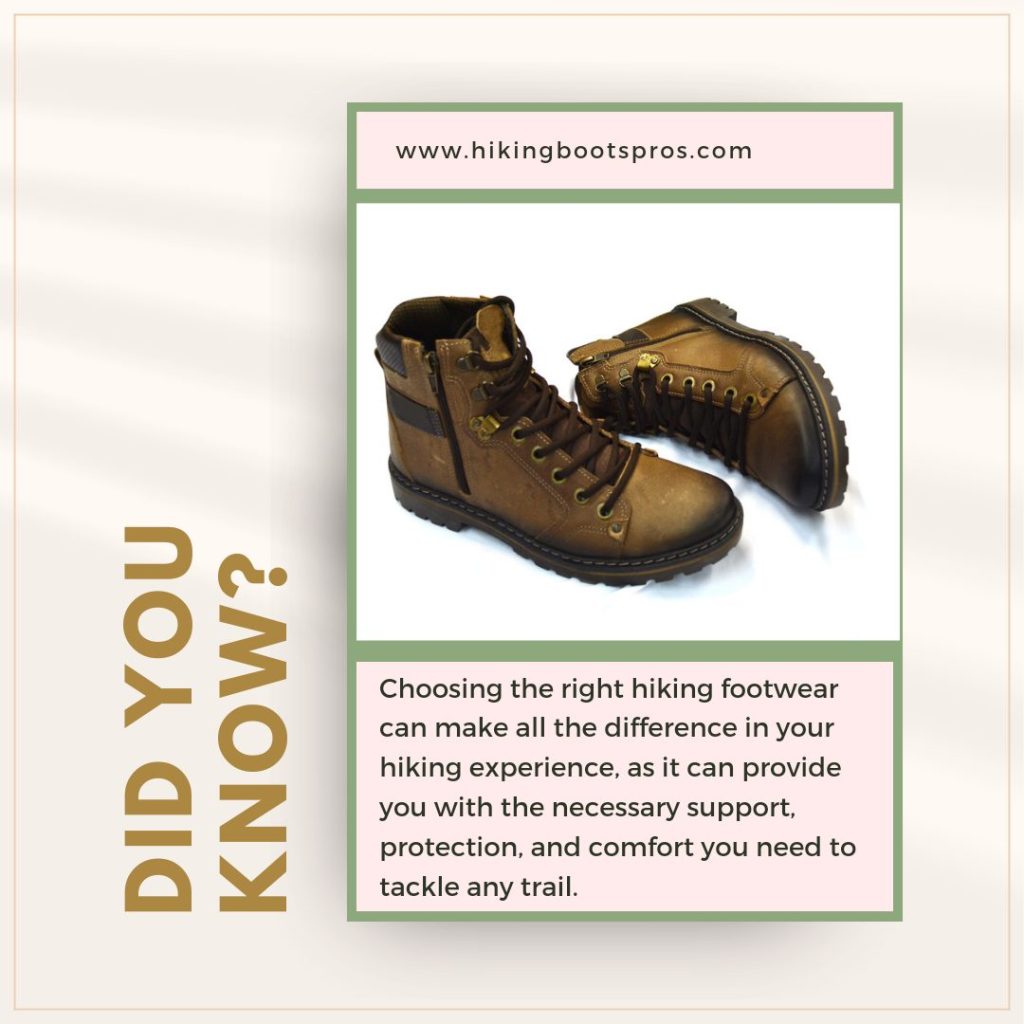Hiking is a wonderful way to enjoy nature, get exercise, and relieve stress. However, many hikers wonder if hiking without boots is possible. In this post, we’ll explore the importance of proper hiking footwear, the risks of hiking without it, and the different types of footwear available.
We’ll also look at some considerations to keep in mind when choosing hiking footwear and discuss alternative options to hiking boots. Finally, we’ll share some tips for hiking without boots.
Can I Hike Without Hiking Boots?
Yes, you can hike without hiking boots, but it’s not recommended. Hiking boots are specifically designed to provide support, protection, and stability on rugged terrain. While you may be able to hike short distances in sneakers or other types of footwear, it’s not a good idea for longer hikes or more challenging terrain.
What Is The Importance of Proper Hiking Footwear?
Hiking is a great way to explore nature and stay physically active. However, it’s important to have the proper footwear to ensure a safe and comfortable experience. The importance of proper hiking footwear cannot be overstated, as it can affect both your performance and your safety on the trail.
Explanation of proper hiking footwear
Proper hiking footwear is essential for a safe and comfortable hiking experience. Hiking boots provide ankle support, protection from sharp rocks and debris, and traction on slippery surfaces.
Trail shoes offer similar features but are more lightweight and flexible. Sneakers are comfortable but lack the necessary support and durability for hiking.
Risks of hiking without proper footwear
Hiking without proper footwear can lead to a range of issues, including blisters, sprains, and even more serious injuries. Footwear that doesn’t offer enough support or traction can also increase the risk of falls and slips, especially on steep or uneven terrain.
Difference between hiking boots, trail shoes, and sneakers
Hiking boots are typically made of heavy-duty materials like leather and have a thick, durable sole for traction and support. Trail shoes are lighter-weight and more flexible, with a lower ankle cut for greater freedom of movement. Sneakers are designed for comfort and breathability but lack the support and durability needed for hiking.
What Considerations to Look for When Choosing Hiking Footwear?

When it comes to hiking, footwear is one of the most important pieces of gear you’ll need to consider. Choosing the right hiking footwear can make all the difference in your hiking experience, as it can provide you with the necessary support, protection, and comfort you need to tackle any trail.
Terrain and conditions of the hike
Consider the terrain and conditions of your hike when choosing footwear. For example, if you’ll be hiking on rocky or uneven terrain, you’ll want footwear with good ankle support and a durable sole. If you’ll be hiking in wet conditions, look for footwear with a waterproof or water-resistant coating.
Foot shape and size
Make sure to choose footwear that fits well and accommodates the shape of your foot. Shoes that are too tight or too loose can cause blisters or other foot problems, while shoes that don’t provide enough support can lead to ankle and foot pain.
Personal preference
Ultimately, the choice of hiking footwear comes down to personal preference. While hiking boots are recommended for more challenging terrain, some hikers prefer the flexibility and comfort of trail shoes or sneakers. Consider your own needs and preferences when making a choice.
What Are the Alternatives to Hiking Boots?
Hiking boots are designed to provide support, stability, and protection for your feet while hiking. However, they may not be the best option for everyone. Here are some alternatives to hiking boots that you can consider:
Trail Running Shoes
Trail running shoes are a great option for hiking as they are lightweight, breathable, and have good traction. They are designed for off-road terrain and can handle rough trails just like hiking boots. They provide flexibility and are comfortable for long hikes. However, they may not offer as much ankle support and protection as hiking boots.
Hiking Sandals
Hiking sandals are another alternative to hiking boots. They are designed to be lightweight, breathable, and quick-drying. They provide good ventilation for your feet and can keep them cool during hot weather. They are also great for stream crossings and water hikes. However, they may not provide as much protection for your feet as hiking boots and may not be suitable for rough terrain.
Approach Shoes
Approach shoes are designed for climbing and hiking on rocky terrain. They are lightweight, flexible, and provide good traction. They have a sticky rubber sole that can grip rocks and provide stability on uneven surfaces.
They are also great for scrambling and bouldering. However, they may not provide as much protection for your feet as hiking boots and may not be suitable for long hikes.
What are the Tips for Hiking Without Hiking Boots?
If you decide to hike without hiking boots, it is important to take some precautions to ensure your safety and comfort. Here are some tips for hiking without hiking boots:
Choose the footwear that is appropriate for the terrain and conditions of your hike. For example, if you are hiking in a rocky area, you may want to wear approach shoes or trail running shoes with good traction.
Make sure to break in your footwear before the hike. This will help prevent blisters and discomfort during the hike. Wear socks that are moisture-wicking and provide cushioning to prevent blisters and keep your feet comfortable.
It is always a good idea to bring an extra pair of footwear in case your first pair gets wet or uncomfortable. Always be prepared for emergencies and bring first aid supplies, extra water, and a map and compass.
Read more about How are hiking boots different from sneakers
Conclusion
In conclusion, hiking without boots is possible, but not recommended. Proper hiking footwear is essential for a safe and comfortable hiking experience, and there are a variety of options available to suit different needs and preferences.
When choosing hiking footwear, it’s important to consider the terrain and conditions of your hike, as well as your foot shape and personal preferences. Finally, if you do choose to hike without boots, make sure to take extra precautions to prevent injury, such as choosing a shorter or less challenging hike, and being extra cautious on tricky terrain.
FAQs
Hiking boots are not always necessary for hiking, but they do provide added support, protection, and stability on rough terrain and in harsh weather conditions.
Sneakers can be used for hiking, but they do not provide the same level of support, protection, and durability as hiking boots. It is important to choose a shoe with a sturdy sole, good traction, and enough cushioning for your feet.

Tyler Looney is an avid hiking enthusiast and the author of HikingBootsPros.com, a website dedicated to providing helpful insights and advice on choosing the best hiking boots. His expertise and passion for hiking have made him a valuable resource for both beginner and experienced hikers alike.

